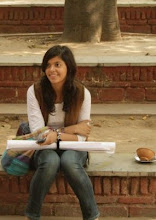Book Review: The House of the Spirits, by Isabel Allende
The House of the Spirits is an epic on four generations of women of the Trueba family; their dreams, hopes, love affairs, spiritual yearnings, and connections with each other. The book also portrays the chaotic social and political changes occurring in Chile. Although the story is fictional, it draws from the reality of not only the history of Latin American countries but all the third world. This is the true, pure and raw recent history of these countries summarized concisely in this novel. The offbeat magic realism, lightens up the intensity of historical events presented in this novel; After all the magic realism is a part of the culture in the third world. The part of the novel that has impacted me as a reader is the ‘Big house in the corner’. The various moods and characters in the novel have been portrayed by this ‘Big house in the corner’.
As named by Allende, the ‘big house in the corner’, it is the newly built house of the Trueba family. It is evidently the grandest house in the town. Allende’s description of the house indicates a major change that would occur due to it. She portrays the house as a living being, witnessing the growth of the Trueba family over three generations. The life of the Trueba second generation begins in this house. The Trueba couple moves into the extravagant house Esteban builds for his wife Claire, a structure that everyone calls "the big house on the corner". This is soon populated with Claire's spiritualist friends, the artists she sponsors, the charity cases she takes an interest in, with Esteban's political cronies, and, above all, with the Trueba children; their daughter, Blanca, a modest girl who will, to the fury of her father, form a lifelong connection with the son of his foreman, the twins.
When the house is newly built, Esteban, the main protagonist is also young and in full spirits. The house also dilapidates with Esteban’s death; Hence in this case it acts as a symbol for his life.
The house is white in color, and can thus be spotted from far. It has big entrances and enormous staircases leading to the first floor. The staircases in this case are designed such that they meet after regular intervals. This could again act as a metaphor for the Trueba family; they all met at different situations of each other’s life.
Allende sets her family saga against a backdrop of political change, in an occasionally violent era, but her novel also functions as an examination of women's lives during this period in Chile. The house acts as a major symbol in the novel. There is repetitive description of the house which is used to expose the characters of the novel. It is this house, that I haven’t forgotten till date.

No comments:
Post a Comment